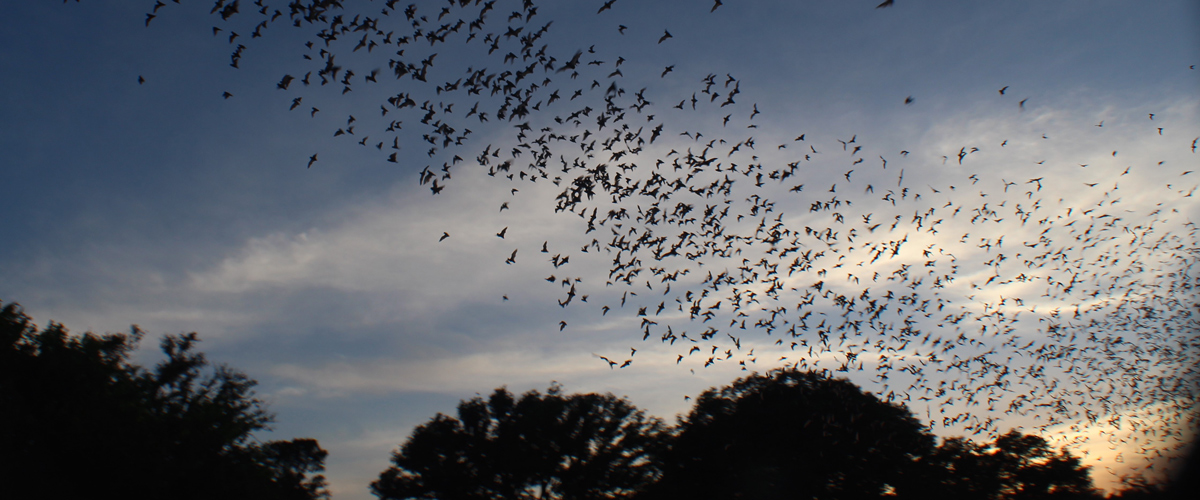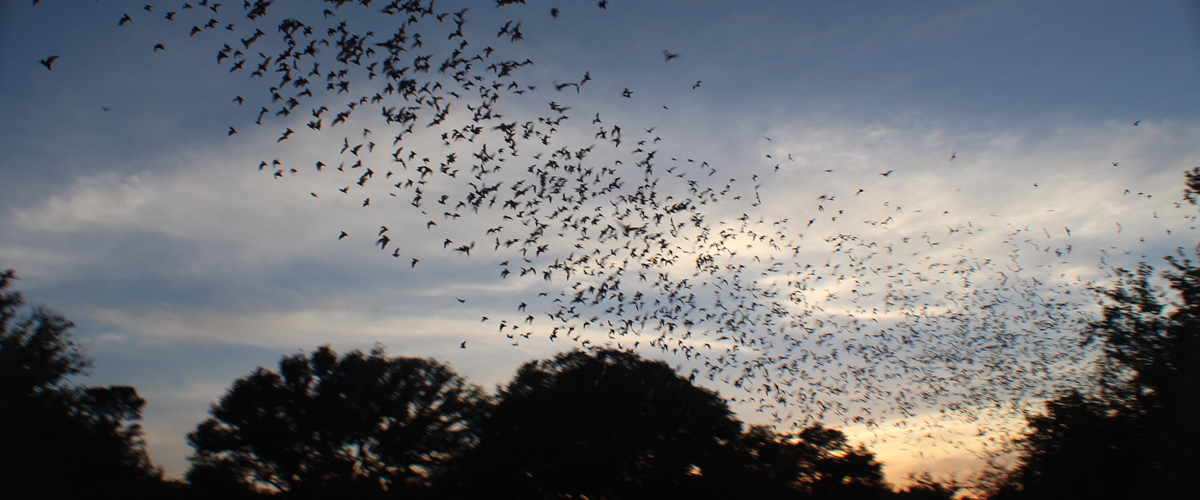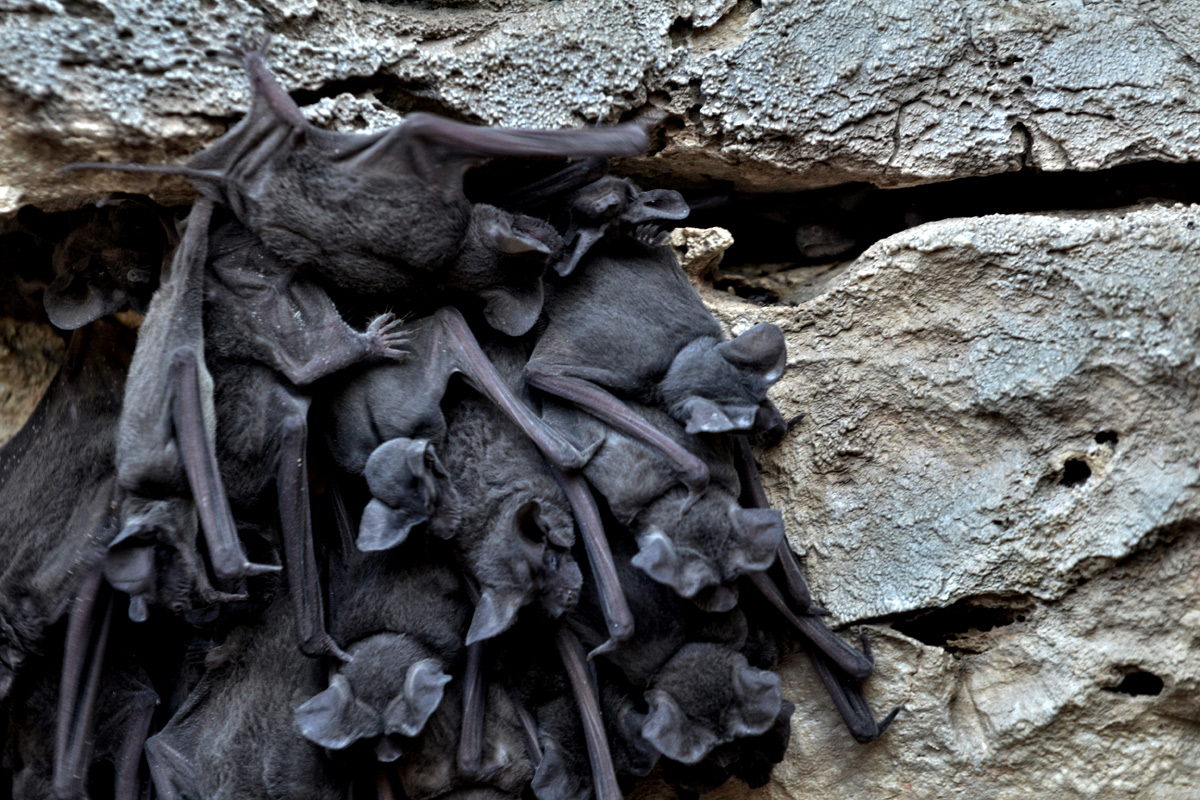The big picture: using wildflower strips for pest control
Historical radar data from weather monitoring archives have provided unprecedented access to the behaviours of the world’s largest colony of migratory bats and revealed changes in the animals’ seasonal habits with implications for pest management and agricultural production.
The work, which focuses on the Bracken Cave colony in southern Texas, is the first long-term study of animal migration using radar, say Phillip Stepanian and Charlotte Wainwright, meteorologists from Rothamsted Research. The pair’s findings are published today in Global Change Biology.
“These bats spend every night hard at work for local farmers, consuming over half of their own weight in insects, many of which are harmful agricultural pests, such as the noctuid moths, corn earworm and fall armyworm,” says Wainwright.
“Our initial goal was just to show that the populations could be monitored remotely without disturbing the colony. We weren’t expecting to see anything particularly noteworthy. The results were surprising,” says Stepanian.



Millions of bats regularly migrate north from Mexico to Bracken Cave, which is managed by Bat Conservation International in the suburbs of San Antonio. Using the radar data, the pair measured the population exiting the cave every night for 22 years, from 1995 to 2017, enabling them to record seasonal and longer-term changes.
“We found that the bats are migrating to Texas roughly two weeks earlier than they were 22 years ago. They now arrive, on average, in mid March rather than late March,” says Wainwright.
While most bats tend to have left by the end of November, the pair discovered that about 3.5% of the summer population are now staying for the winter, compared with less than 1% 22 years ago and, from written cave surveys, no overwintering bats at all in the mid 1950s.
“We can’t tell if the overwintering bats are bats that arrived in March and have not returned south, or if they migrated to Bracken Cave from farther north,” says Stepanian. “However, the behavioural patterns indicate a response to some environmental change, and to the presence of insect prey earlier in the year.”

This bat study “presents a new perspective on adaptation to global change, answering some longstanding questions while raising many more,” conclude the pair. They also note that “weather radar networks are key infrastructure around much of the world...and hold the promise of providing continental surveillance of bat populations, as well as their ongoing responses to global change.”
Rothamsted Research is the longest-running agricultural research institute in the world. We work from gene to field with a proud history of ground-breaking
discoveries in areas as diverse as crop management, statistical interpretation and soil health. Our founders, in 1843, were the pioneers of modern
agriculture, and we are known for our imaginative science and our collaborative approach to developing innovative farm practice.
Through independent research, we make significant contributions to improving agri-food systems in the UK and internationally, with
economic impact estimated to exceed £3 bn in annual contribution to the UK economy. Our strength lies in our systems approach, which combines strategic research,
interdisciplinary teams and multiple partnerships.
Rothamsted is home to three unique National Bioscience Research Infrastructures which are open to researchers from all over the world:
The Long-Term Experiments,
Rothamsted Insect Survey and the
North Wyke Farm Platform.
We are strategically funded by the Biotechnology and Biological Sciences Research Council (BBSRC), with additional support from other national and
international funding streams, and from industry. We are also supported by the Lawes Agricultural Trust (LAT).
The Biotechnology and Biological Sciences Research Council is part of UK Research and Innovation, a non-departmental public body funded by a grant-in-aid
from the UK government.
BBSRC invests to push back the frontiers of biology and deliver a healthy, prosperous and sustainable future. Through our investments, we build and support a vibrant,
dynamic and inclusive community which delivers ground-breaking discoveries and develops bio-based solutions that contribute to tackling global challenges,
such as sustainable food production, climate change, and healthy ageing.
As part of UK Research and Innovation (UKRI), we not only play a pivotal role in fostering connections that enable the UK’s world-class research and innovation system
to flourish – we also have a responsibility to enable the creation of a research culture that is diverse, resilient, and engaged.
BBSRC proudly forges interdisciplinary collaborations where excellent bioscience has a fundamental role. We pioneer approaches that enhance the equality, diversity,
and inclusion of talent by investing in people, infrastructure, technologies, and partnerships on a global scale.
The Lawes Agricultural Trust, established in 1889 by Sir John Bennet Lawes, supports Rothamsted Research’s national and international agricultural science through the provision of land, facilities and funding. LAT, a charitable trust, owns the estates at Harpenden and Broom's Barn, including many of the buildings used by Rothamsted Research. LAT provides an annual research grant to the Director, accommodation for nearly 200 people, and support for fellowships for young scientists from developing countries. LAT also makes capital grants to help modernise facilities at Rothamsted, or invests in new buildings.